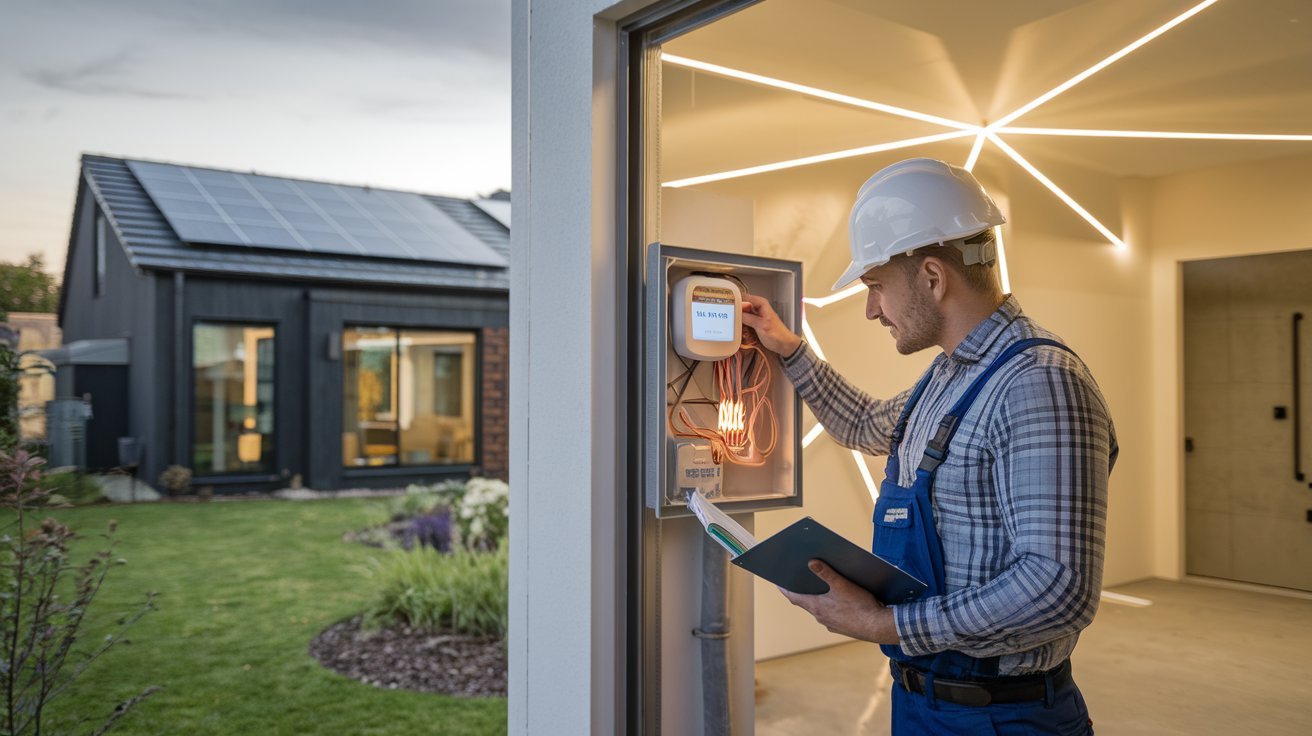
Energy efficiency is no longer a luxury but a necessity, particularly as energy costs rise and environmental concerns grow. However, achieving energy efficiency doesn’t merely involve choosing energy-saving appliances or insulating your walls. A less-discussed yet equally important factor is electrical compliance. Ensuring your property’s electrical system adheres to regulatory standards can play a pivotal role in maximizing energy efficiency while ensuring safety and reliability.
This article will explore the relationship between energy efficiency and electrical compliance, offering actionable insights for homeowners, property managers, and electricians.
Energy efficiency isn’t just about saving money on utility bills; it’s about contributing to a more sustainable future. According to the International Energy Agency (IEA), improving energy efficiency can reduce global energy consumption by nearly a third by 2040. That’s a significant drop, considering how much energy is wasted due to outdated systems and inefficient practices.
Here are some key reasons why energy efficiency should matter to you:
Now, where does electrical compliance fit into this picture?
Electrical compliance refers to ensuring that your electrical systems align with relevant safety and energy standards. These standards are typically enforced by local or national regulatory bodies, and they vary depending on your location.
Compliance goes beyond just having a safe wiring system. It also encompasses regulations about energy consumption, efficient lighting, and the use of compliant electrical panels, circuits, and appliances.
For instance, in the U.S., the National Electrical Code (NEC) sets standards for electrical systems, while Energy Star certifications highlight appliances that meet stringent energy efficiency criteria.
Neglecting electrical compliance can result in fines, higher insurance premiums, and, most importantly, increased energy consumption and potential safety hazards.
An outdated or non-compliant electrical system can be a significant source of energy inefficiency. Poorly maintained circuits, overloaded panels, and outdated wiring not only waste electricity but also pose fire risks. Ensuring compliance helps identify and fix inefficiencies in your electrical framework. This could include upgrading to energy-efficient circuit breakers or rewiring outdated systems.
For example, older electrical wiring systems may not support the demands of energy-efficient appliances, leading to power losses. Compliance involves upgrading these systems, ensuring seamless operation with modern, energy-saving technologies.
Compliance standards often encourage or mandate the integration of advanced energy systems like solar panels, smart meters, and energy management systems. These technologies can optimize energy use by automatically adjusting consumption based on real-time data.
For instance, property managers upgrading to a compliant energy management system can analyze patterns in electricity usage and make informed decisions to reduce waste. Similarly, compliant solar inverters ensure that renewable energy solutions are securely integrated into the electrical grid without energy losses.
Did you know that lighting accounts for approximately 15% of global energy consumption? A significant percentage of this energy is wasted through inefficient bulbs like incandescent lights. Electrical compliance standards now mandate the use of more efficient options, such as LEDs, which consume 75% less energy and have a longer lifespan.
For property managers, ensuring compliance with energy-efficient lighting solutions can mean lower utility bills for tenants and fewer maintenance calls due to bulb replacements.
Compliance isn’t just about structural components like wiring; it extends to the appliances you install in your home or property. Appliances with energy-efficient ratings, like those certified by Energy Star, operate optimally only when plugged into compliant systems. For instance, a high-efficiency HVAC system paired with a sub-par electrical panel won’t perform as intended, negating the benefits of energy savings.
The relationship between energy efficiency and electrical compliance isn’t just about savings; it’s also about safety. Non-compliant systems can lead to overloaded circuits, which waste energy and increase the risk of electrical fires. Regular compliance checks ensure these risks are addressed while simultaneously identifying inefficiencies detrimental to your energy goals.
For anyone looking to enhance energy efficiency while remaining compliant, here’s a step-by-step guide to get started:
Hire a licensed electrician to assess your property’s electrical system. This will identify outdated wiring, overloaded circuits, and non-compliant areas.
Older homes, particularly those built before 1980, often have wiring systems incompatible with modern energy demands. Updating these systems can drastically improve energy efficiency.
Replace incandescent bulbs with energy-efficient LEDs and consider installing smart lighting systems that automatically dim or turn off based on room occupancy.
Consider integrating solar panels, energy management systems, or smart meters. These systems often require compliance upgrades but provide significant long-term benefits.
Ensure that all new appliances meet energy efficiency standards like Energy Star certifications. Pair them with compliant systems to unlock their full potential.
Electrical compliance isn’t a one-and-done task. Regular inspections and maintenance ensure your systems remain both safe and energy-efficient while adapting to new standards or technologies.
If you manage properties or work as a contractor, understanding the link between energy efficiency and compliance presents opportunities to meet client demands while setting yourself apart from competitors.
For property managers, compliance upgrades can attract eco-conscious tenants while reducing operational costs. For electricians, offering compliance-related energy efficiency audits establishes trust and positions you as an expert in modern solutions.
Energy efficiency is a crucial strategy in combating energy waste and environmental impact. But its potential remains untapped without electrical compliance. By aligning your property’s electrical systems with regulatory standards, you not only enhance efficiency but also unlock safer, smarter, and more sustainable energy use.
For homeowners, property managers, and electricians alike, achieving this balance is an investment that pays off in lower costs, fewer risks, and a more resilient future. Take the first step today by scheduling a compliance and efficiency audit to identify opportunities for growth and improvement.